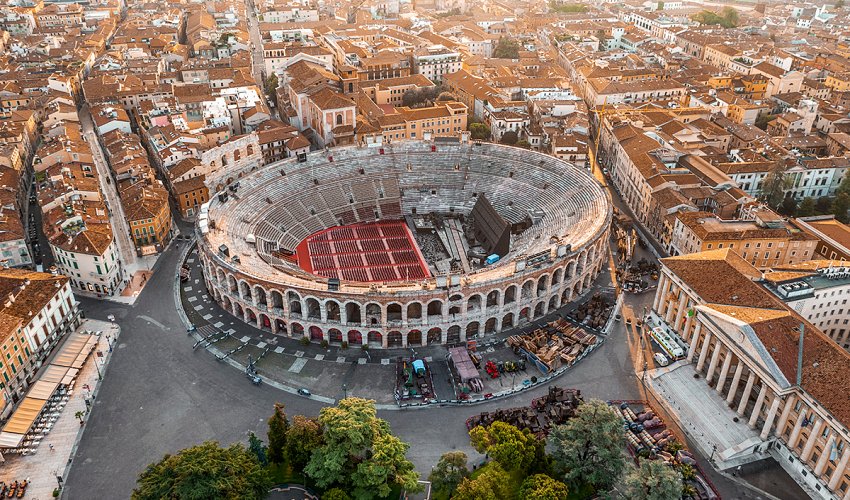Arena of Verona

Verona, a wonderful city that gives its name to the province of the same name, is an intrinsic inhabited center of art, culture and history, from Roman times to Romeo and Juliet. It is often referred to as "little Rome", due to the abundance and state of conservation of its finds. Like its "big sister", in fact, Verona also has its "small Colosseum", known to all as the Arena. Compared to the construction in Lazio, the Arena of Verona is less than half the size, but, almost regardless of its age, it continues to be used today for shows of all type, especially musical.
The history of the Verona Arena
From its foundation in the 1st century BC, Verona became a rich and populous city following its strategic position among the most important communication routes in northern Italy. Thus it was that over the course of a century, it acquired large monumental buildings: public palaces, temples and places of entertainment.
The Gladiator Shows
Over time, in all the territories dominated by the Romans, fights between gladiators had spread, bloody fights in which fighters fought each other to give spectacle to the public, often in fights to the death. The bloody fights had originated in Etruria or Campania, perhaps as a funeral ritual, and soon turned into a pure form of spectacle, much loved by the spectators. Politicians used gladiators, venationes, naumachias to obtain public consent and appease social dissension. Local emperors and magistrates competed to see who offered ever more grandiose and elaborate shows.
Clearly, to gather the crowds that flocked to watch the fighting, a special building was designed: the amphitheater. The architects of Rome had taken the Greek theater and then doubled it, placing one in front of the other and then joining them, forming an elliptical structure. The action took place in the center, while the audience sat around the concentric stands.
In a short time, the amphitheater became one of the indispensable buildings in every city scattered throughout the Empire, together with the gladiator fights held inside these monumental buildings. Irremediably becoming one of the representative characters of the ancient Roman culture. Archaeologists estimate that over time, around 200 have been built, with many of them still well preserved.
For the full article: Agriturismo.life






